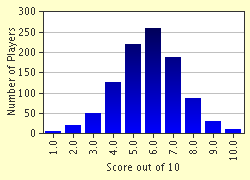Quiz Answer Key and Fun Facts
1. Apart from immunization for diseases such as tetanus, diphtheria, measles and tuberculosis, what other activities are undertaken in developing countries to assist in the promotion of health?
2. Infant mortality rates (up to the age of 5) are extremely high in developing countries. What is the reason for this?
3. In a United Nations context, what does the term 'HDI' mean?
4. Which of the following is the LEAST likely to break the poverty cycle in the long term?
5. Hurricane Mitch devastated parts of the Caribbean in October 1998. Which country was most affected?
6. Adult literacy rates in some developing countries are appalling. Which of the following countries has the lowest literacy rate?
7. Which is the poorest country in South America?
8. The International Monetary Fund (IMF) and the World Bank, two separate entities, were both set up at the Bretton Woods Conference in 1945. Which one was specifically designed to assist developing countries fight poverty?
9. What percentage of the world's 1.3 billion poor are made up of women?
10. Which industrialized country is the highest contributor per capita providing overseas aid?
Source: Author
exit10
This quiz was reviewed by our editing team before going online.
Any errors found in FunTrivia content are routinely corrected through our feedback system.

